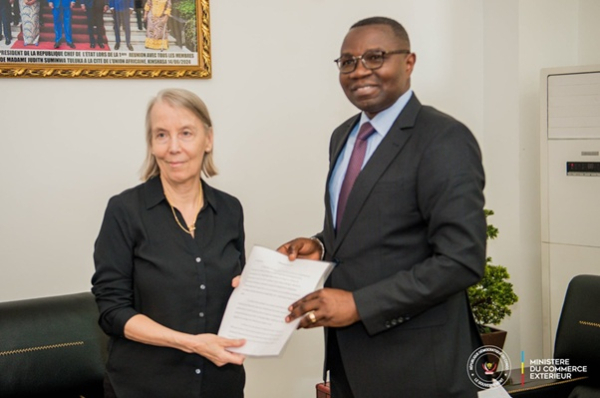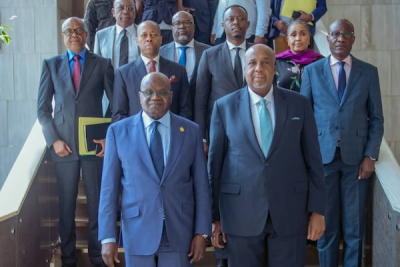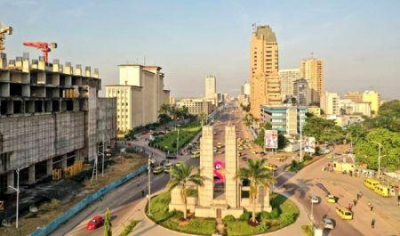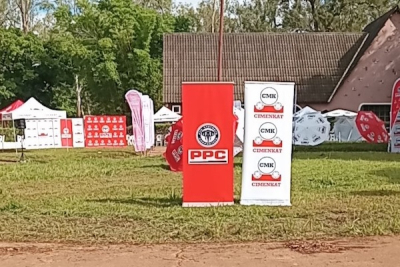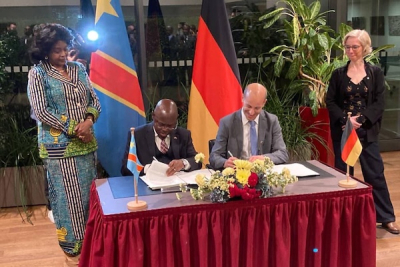The Democratic Republic of Congo (DRC) is featured on the list of countries eligible for the African Growth and Opportunity Act (AGOA) in 2025. Julien Paluku, Congolese Minister of Foreign Trade, confirmed the news on February 11, via a post on X (former Twitter).
Paluku quoted the U.S. Ambassador to the DRC Lucy Tamlyn, and attributed his country’s inclusion to the Congolese government's efforts to enhance workers' rights through structural policy reforms. "The USA welcomes the progress made in strengthening the rule of law and economic reforms, as well as the recruitment of labor inspectors to protect workers' rights," he stated.
A few months ago, the U.S. Department of Labor had classified Congolese cobalt—of which the DRC supplies 70% globally—as a product associated with child labor. The related report mentioned Ziki Swazey, a child exploited in an artisanal mine, was brought up, noting that while industrial mining is regulated, 15% to 30% of Congolese production still comes from artisanal sources where such practices persist. This situation has implications for China, which absorbs 90% of DRC's cobalt exports and plays a pivotal role in the global supply chain.
Access to minerals
Based on recent findings, Washington has issued five recommendations to the Congolese government. Although the full implementation of these suggestions remains uncertain, the DRC's renewal under the African Growth and Opportunity Act (AGOA) for 2025 suggests some progress. Since the Trump administration focuses on reindustrialization, the U.S. might bolster ties with the DRC, a crucial supplier of strategic minerals essential for semiconductor manufacturing—resources often compared to oil in terms of future importance.
The DRC sold $298.7 million of copper to the U.S. last year. It was the mineral that the Central African country exported the most to the U.S., according to Trading Economics. With room for significantly boosting its mineral exports, the DRC has been implementing reforms to better manage its resource sales, particularly by securing a share of minerals from mining joint ventures. Furthermore, with the Lobito rail corridor operational, American buyers could negotiate directly with the DRC to meet their growing demand for critical minerals over the next four years.
Last year, The DRC unveiled a national strategy that aims to diversify its export destinations and expand foreign trade. This roadmap targets 26 sectors, including 21 non-mining sectors such as coffee, cocoa, palm oil, and pineapple, alongside five mining sectors: cobalt, copper, gold, and the three T's—cassiterite, wolframite, and coltan.
Uncertainty
The DRC ambitions to boost its exports with the U.S. from a historic peak of $600 million in 2011 to as much as $3-5 billion annually by 2025-2030. While AGOA's contribution to these exports remains modest, the initiative has spurred local economic growth through several eligible agricultural and industrial products.
Foreign Trade Minister Julien Paluku has urged the Congolese private sector to capitalize on AGOA's renewal to increase exports to the United States. However, it's uncertain whether Chinese firms, which dominate the DRC's mining sector (estimated at 80% by some sources), will readily embrace this directive.
AGOA is set to expire in 2025, and according to some experts, its renewal in its current form is uncertain, given the rise of conservative voices in Washington
This article was initially published in French by Idriss Linge and Moutiou Adjibi Nourou
Edited in English by Ola Schad Akinocho






